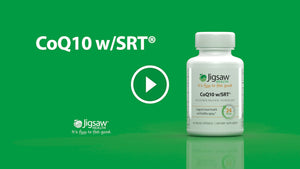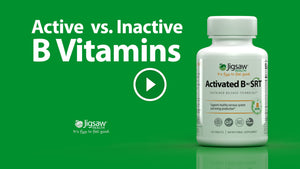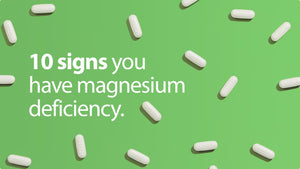Unlike antibiotics, which means “to destroy life,” probiotics literally means “life giving.” In more practical terms, antibiotics destroy without prejudice — killing the bad bacteria that can cause infection, while also destroying the good bacteria that help fight infection. Probiotics, on the other hand, re-populate the good bacteria that can help kill the bad bacteria and fight infection.
The Rise—and Near Fall—of Antibiotics
Antibiotics have been in use since 1939 when penicillin was isolated, followed by streptomycin five years later. Both of these powerful, “miracle” drugs were mass produced during World War II,1 and are credited with effectively treating bacterial illnesses and saving many lives. In fact, the likelihood of dying prematurely from infectious diseases in the early 19th century — before antibiotics — was as high as 40%.2
Since then, a diverse number of antibiotics have been produced. Most are medium- and broad-spectrum antibiotics which, instead of killing the offending bacteria, kill ALL bacteria. These include tetracyclines, ciprofloxacin, bacitracin, erythromycins, penicillin, cephalosporins, and streptomycins.
One of the side effects of medium- and, especially, broad-spectrum antibiotics is that they radically change the bacterial population in the intestines. Because these antibiotics kill all bacteria — even good bacteria that fight infectious bad bacteria — they put the body at risk for superinfection by fungi and other microorganisms.1
Treating a superinfection with more antibiotics then creates a vicious cycle: more antibiotics are administered, the immune system breaks down, the depleted body surrenders to yet another superbug which requires even more antibiotics.
Clearly, the “miracle” drug of the 1940s — which caused some to predict the end of infectious diseases by the 1960s — now appears to have entered a new “post-antibiotic era” where bacteria-resistant illnesses significantly outpace the development of new antibiotics to treat them.3
The Growth of Bacteria-Resistant Illnesses
Just a few years after penicillin was put on the market, scientists began noticing a penicillin-resistant strain of Staphylococcus aureus — bacteria normally found in the body’s intestinal flora. Twenty-five years later, resistant strains of gonorrhea, shigella, and salmonella appeared.3
Since then, bacteria-resistant illnesses have become a worldwide public health concern. According to the Centers for Disease Control and Prevention (CDC), two million patients a year pick up infections in U.S. hospitals. About 90,000 die as a result. Of these deaths, approximately 70% are caused by bacteria that are resistant to at least one antibiotic.4
Not only that but vancomycin-resistant Enterococcus faecium (VRE) and methicillin-resistant Staphylococcus aureus (MRSA), once confined to hospitals, have begun creeping into the community at large.2
Other Alarming Statistics
- Multi drug-resistant tuberculosis, once confined to Africans also infected with HIV, has now appeared among the general populations of Europe, Africa, and Asia.2
- Drugs used to effectively treat cholera in India just 15 years ago now are largely useless in the battle to contain cholera.2
- In Southeast Asia, 98% of all gonorrhea cases are multi drug-resistant — which contributes to the sexual transmission of HIV.2
While poverty and counterfeit drugs contribute to bacteria-resistant illnesses in Third World countries, physicians over-prescribing antibiotics, lack of education among patients, and livestock feeding practices account for the majority of bacteria-resistance in the U.S.
Overuse and Misuse of Antibiotics
By physicians. In the U.S., physicians write approximately one million prescriptions for antibiotics each year. Of these, says the CDC, half are inappropriately prescribed for common viruses — not the bacterial illnesses for which antibiotics were intended.5
Doctors cite time, uncertainty, and patient demand as reasons for over-prescribing antibiotics.5 In one study where 80% of prescriptions were not within the CDC guidelines, patients were significantly more likely to receive an unnecessary antibiotic when they indicated their illness was severe or where they mentioned a positive experience with a previous antibiotic.5
With most doctors seeing patients for a brief 15-20 minutes, their primary concern — and what their training has taught them — is to halt symptoms. If patients say that they’ve had a good experience with a particular antibiotic, physicians will often write a prescription for that antibiotic without delving into the cause of the symptoms.5
By patients. In the U.S., we do everything fast. And healing is no exception. Patients’ demand a label and a quick fix for whatever ails them — even if they don’t understand the consequences. As one study found, 58% of patients were not aware of the possible health risks associated with the misuse of antibiotics.5
In addition, drug companies spend $12 billion each year to advertise their drugs.6 Apparently, it’s working. Ninety-five percent of doctors had seen an average of seven patients in the previous six months who requested specific drugs that they’d seen advertised on TV, in newspapers or magazines, or on the Internet.2
Finally, patients have a tendency to stop taking antibiotics as soon as they feel better. Not taking the full course of prescribed antibiotics, however, allows the bacteria that should’ve been killed off to continue growing and mutating into a resistant strain.3
In our food. The Union of Concerned Scientists estimates that more than 70% of all antibiotics used in the U.S. each year — some 25 million pounds — are routinely fed to the poultry, pigs, and beef cattle that end up on our dinner plates. But it’s not to treat disease as you might suspect. Instead, antibiotics are used as food additives to promote faster growth and to compensate for illnesses the animals might get as a result of crowded and unsanitary conditions on corporate farms and in feedlots. And over half of these antibiotics are the same ones that doctors depend on to treat human illness!7
It’s no wonder, then, that we now see bacteria-resistant illnesses jumping species. According to the World Health Organization, vancomycin-resistant Enterococcus faecium (VRE) may be an example of a disease that first appeared in animals, then jumped to the more vulnerable segments of the human population.2
There are also implications for the U.S. meat trade. As reported by the General Accounting Office (GAO), New Zealand, Denmark, and the European Union — all competitors in the world meat market — have banned the use of most, if not all, antibiotics as growth promoters. And they have done this without adversely affecting food safety.2
All of these — doctors, patients, and our food — have negatively contributed to the increasing number of bacteria-resistant illnesses in the U.S. and around the world. While new antibiotics are continually being developed, the time it takes to get them to market can be as long as ten or more years. And by that time, they may not be effective against the bacteria-resistant illnesses they were intended to treat.
Clearly, the “post-antibiotic era” opens the door for new, more life-giving treatments for infectious diseases.
Probiotics Give Life to Better Health
As mentioned above, antibiotics kill indiscriminately. They not only kill the bad bacteria that cause illness, they wipe out the good bacteria that fight off the illness-producing bad bugs. In fact, the word “antibiotics” means “to destroy life.”
Probiotics, on the other hand, “give life.” And re-populating the gut with healthy intestinal flora, such as high-dose probiotics, can help fight the bad bacteria.
Take Action
The evidence for the effectiveness of probiotics continues to grow. According to Psychology Today, clinical trials continue to suggest that “increasing the gut’s level of probiotics prevents and alleviates many intestinal problems...”17
Clearly, using high-dose probiotics to re-populate the intestinal flora with healthy bacteria can have some powerful health benefits.
Cited Sources:
1) Definition for “antibiotic,” The Columbia Encyclopedia, 6th ed., 6/7/2005.
2) “Overcoming Antimicrobial Resistance”
World Health Organization Report on Infectious Diseases 2000
http://www.who.int/infectious-disease-report/2000/index.html
Accessed August 2005
3) Definition for “drug resistance,” The Columbia Encyclopedia, 6th ed., 6/7/2005.
4) Light, J., “Working to keep antibiotics working: can the superbugs be stopped?” Multinational Monitor,
1/1/2004.
5) Gums, John G., “Redefining appropriate use of antibiotics,” American Family Physician, 1/1/2004.
6) “Secrets of the FDA Revealed by Top Insider Doctor,” Dr. Mercola
http://www.mercola.com/2005/aug/13/fda_david_graham.htm
Accessed August 2005
7) Barrett, B. & Wallinga, D., “Act against threat from ‘superbugs’; legislation to halt the routine use of antibiotics in livestock feed is needed to combat the threat to human health posed by antibiotic resistant bacteria,” Wisconsin State Journal, 10/24/2004.
8) Potera, C., “A gut reaction to probiotics,” Environmental Health Perspectives, 6/1/2005.
9) Van de Water, J., Keen, C.L., & Gershwin, M.E., “The influence of chronic yogurt consumption on
immunity,” Journal of Nutrition, 10/1999, 129(10), 1932.
10) Gaby, A.R., “Recurrent Candidiasis: one step forward, still backward,” Townsend Letter for Doctors and
Patients, 11/1/2004.
11) Van Niel, C.W., “Probiotics: not just for treatment anymore,” Pediatrics, 1/1/2005.
12) Evans, J., “Probiotic drink cut cases of antibiotic-associated diarrhea in hospital,” Internal Medicine News, 4/1/2005.
13) Seaton, T., “Prebiotic/probiotic update: formulating a bright future for prebiotics and probiotics,” Nutraceuticals World, 3/1/2005.
14) Stevens, S., “Bacteria to the rescue: ‘friendly’ bacteria can help gastrointestinal health,” Daily Herald, Arlington Heights, IL, 11/8/2004.
15) Helm, J., “Lurking in your yogurt are live cultures that may boost immunity, among other benefits,” Chicago Tribune, 3/28/2005.
16) Shaughnessy, A.F., “Probiotic useful for preventing relapse of ulcerative colitis,” American Family Physician, 5/15/2005.
17) Peirce, A., “Guide to natural healing 2004 handbook for winter wellness: twelve natural remedies that boost immunity, lift your mood and keep the heart healthy,” Psychology Today, 11/1/2004.






















